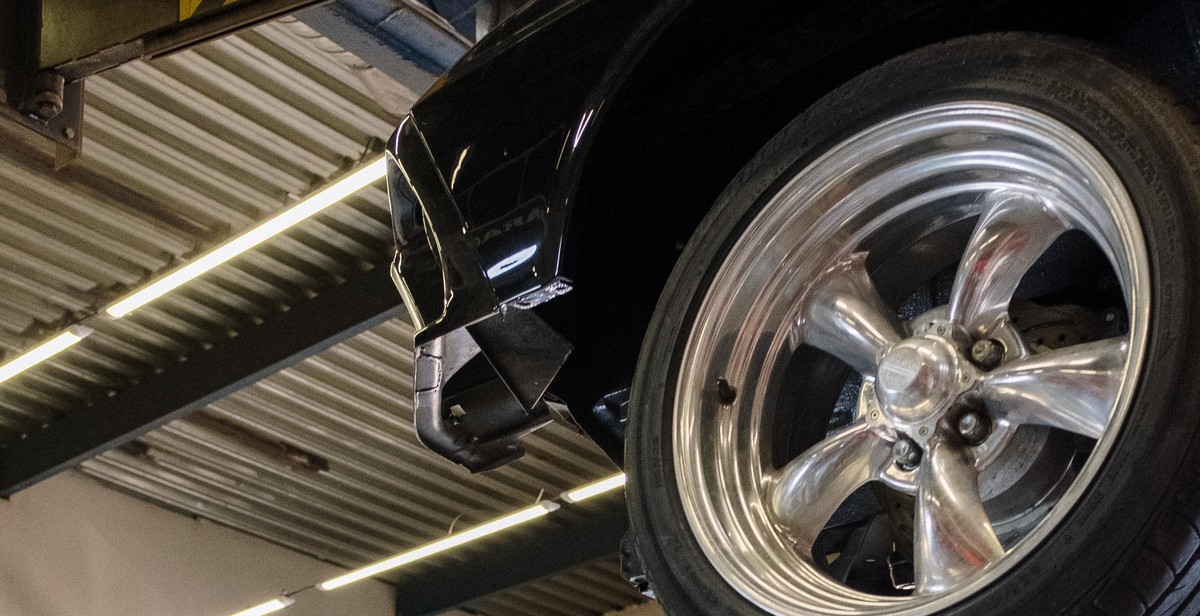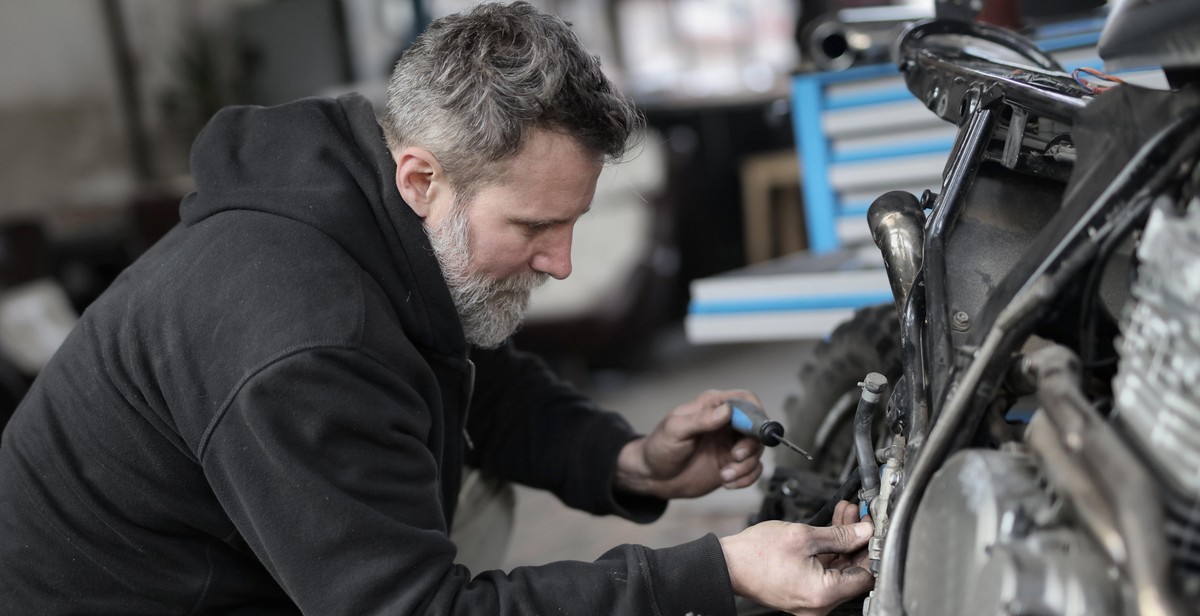How to Perform Basic Car Repairs at Home: Why Learn Basic Car Repairs at Home?
Learning how to perform basic car repairs at home can save you both time and money. It is an essential skill for every car owner. While some repairs may require the expertise of a professional mechanic, there are several basic car repairs that you can perform at home, even if you have limited mechanical experience.
Save Money
One of the main reasons to learn basic car repairs is to save money. Taking your car to a professional mechanic can be costly, especially for simple repairs that you can do yourself. By performing basic car repairs at home, you can save hundreds or even thousands of dollars over the life of your car.
Save Time
Another advantage of learning basic car repairs is that it can save you time. When your car breaks down, you may have to wait for a tow truck or for a mechanic to become available. By performing basic repairs at home, you can get your car back on the road quickly and avoid the hassle of waiting for repairs.
Increased Knowledge and Confidence
Learning basic car repairs can also increase your knowledge and confidence about your car. You will have a better understanding of how your car works and be able to diagnose and fix minor problems. This will give you peace of mind and make you feel more in control of your car’s maintenance.
Conclusion
Learning how to perform basic car repairs at home is a valuable skill for every car owner. It can save you money, time, and increase your knowledge and confidence. In the following sections, we will discuss some basic car repairs that you can perform at home.

Tools and Equipment for Basic Car Repairs at Home
Performing basic car repairs at home can save you time and money. However, to get the job done right, you need the right tools. Here are the essential and optional tools you need for basic car repairs at home:
Essential Tools for Basic Car Repairs at Home
These are the tools you cannot do without:
- Screwdrivers: You will need a set of screwdrivers with different sizes and types of heads to remove screws from various parts of your car.
- Pliers: Pliers are essential for gripping and twisting parts. You will need a set of pliers with different shapes and sizes.
- Socket set: A socket set with different sizes of sockets and ratchets is a must-have for basic car repairs at home.
- Wrenches: You will need a set of wrenches with different sizes to tighten or loosen bolts and nuts.
- Jacks and stands: You will need a jack and stands to lift and support your car when working underneath it.
- Multimeter: A multimeter is essential for diagnosing electrical problems in your car.
Optional Tools for Basic Car Repairs at Home
These tools can make your job easier, but they are not essential:
- Air compressor: An air compressor can be used for various tasks, including inflating tires and powering pneumatic tools.
- Torque wrench: A torque wrench is used to tighten bolts to a specific torque setting.
- Impact wrench: An impact wrench is used to quickly tighten or loosen bolts and nuts.
- Battery charger: A battery charger can be used to charge and maintain your car’s battery.
- Diagnostic scanner: A diagnostic scanner can be used to read and diagnose error codes in your car’s computer system.
| Essential Tools | Optional Tools |
|---|---|
| Screwdrivers | Air compressor |
| Pliers | Torque wrench |
| Socket set | Impact wrench |
| Wrenches | Battery charger |
| Jacks and stands | Diagnostic scanner |
| Multimeter |

Safety Precautions in Basic Car Repairs at Home
Performing basic car repairs at home can save you time and money. However, it is important to remember that working on a car can be dangerous if proper safety precautions are not taken. Here are some safety tips to keep in mind:
1. Wear Protective Gear
Always wear protective gear such as gloves, goggles, and a dust mask to protect yourself from harmful chemicals and debris. Avoid loose clothing and tie back long hair to prevent it from getting caught in moving parts.
2. Disconnect the Battery
Before you start working on the car, disconnect the battery to avoid any electrical shock or short circuits. Make sure to follow the manufacturer’s instructions on how to properly disconnect the battery.
3. Secure the Car
Make sure the car is securely parked and the wheels are chocked before you start working on it. If you are working under the car, use jack stands to support it instead of relying on the jack alone.
4. Use Proper Tools
Always use the right tools for the job. Using improper tools can lead to accidents and damage to the car. Make sure to inspect your tools before using them and replace any damaged or worn out tools.
5. Follow Instructions
Read the car manual and follow the instructions carefully. If you are unsure about a particular repair, seek the help of a professional mechanic. Don’t attempt to do anything that you are not confident about.
6. Clean Up and Dispose of Waste Properly
Dispose of any waste such as oil, coolant, and brake fluid properly. Do not pour it down the drain or dispose of it in the trash. Use a drip tray to catch any spills and dispose of the waste at a local recycling center.
7. Take Breaks
Take regular breaks to avoid fatigue and dehydration. Working on a car can be physically and mentally exhausting, so make sure to take breaks and stay hydrated.
8. Keep Children and Pets Away
Keep children and pets away from the work area. They can be easily distracted and may accidentally cause an accident.
Conclusion
By following these safety precautions, you can minimize the risk of accidents while performing basic car repairs at home. Remember, safety should always be your top priority.

Basic Car Repairs You Can Do at Home
Regular car maintenance is essential to ensure that your vehicle runs smoothly and lasts longer. While some repairs require professional help, there are some basic car repairs you can do at home. Here are five common car repairs you can do yourself:
1. Changing a Flat Tire
Changing a flat tire is a basic car repair that every driver should know how to do. It’s a simple process that can save you time and money. To change a flat tire, you will need a lug wrench, a jack, and a spare tire. First, loosen the lug nuts with the lug wrench, then jack up the car, remove the lug nuts, and replace the flat tire with the spare tire. Tighten the lug nuts and lower the car back to the ground.
2. Replacing Windshield Wipers
Windshield wipers are essential for clear visibility while driving in the rain. Over time, the rubber on the wiper blades wears out and needs to be replaced. To replace windshield wipers, lift the wiper arm away from the windshield, press the release tab on the wiper blade, and slide the blade off the arm. Attach the new wiper blade by sliding it onto the arm until it clicks into place.
3. Changing Oil and Oil Filter
Regular oil changes are crucial for maintaining the health of your engine. To change the oil and oil filter, you will need an oil filter wrench, a drain pan, and fresh oil. First, drain the old oil by removing the drain plug and letting the oil drain into the pan. Remove the old oil filter, replace it with a new one, and refill the engine with fresh oil.
4. Replacing Brake Pads
Brake pads wear out over time and need to be replaced to ensure safe braking. To replace brake pads, you will need a lug wrench, a jack, and new brake pads. First, remove the wheel, then remove the caliper by loosening the bolts and sliding it off the rotor. Remove the old brake pads and replace them with the new ones. Reattach the caliper, tighten the bolts, and replace the wheel.
5. Replacing Headlights
Dim or burnt-out headlights can be dangerous and should be replaced as soon as possible. To replace headlights, you will need a screwdriver and a replacement bulb. Open the hood and locate the headlight assembly. Remove the screws or clips that hold the assembly in place and remove it. Replace the old bulb with the new one and reattach the assembly.
Performing these basic car repairs at home can save you time and money. However, if you are unsure about any repair, it’s best to seek professional help.

Troubleshooting Common Car Problems
Engine Won’t Start
When your car’s engine won’t start, it can be frustrating and confusing. Here are some common reasons why your engine may not start:
- Dead battery: If your battery is dead, your car won’t start. Check to see if your battery is fully charged and if not, try jumpstarting your car.
- Bad starter: If you hear a clicking noise when you turn the key, your starter may be bad. Have it checked and replaced if necessary.
- No fuel: If your car is out of gas, it won’t start. Make sure you have enough fuel in your tank.
- Ignition switch: If your ignition switch is faulty, your car won’t start. Have it checked and replaced if needed.
Strange Noises
Strange noises coming from your car can be a sign of a problem. Here are some common noises and what they may indicate:
- Squealing or screeching: This may indicate worn or loose belts or a problem with the pulleys. Have them checked and replaced if necessary.
- Rattling or knocking: This may indicate a problem with the engine. Have it checked immediately to prevent further damage.
- Grinding: This may indicate a problem with the brakes. Have them checked and replaced if needed.
- Hissing: This may indicate a leak in the cooling system. Have it checked and repaired as soon as possible.
Warning Lights
Warning lights on your dashboard can be a sign of a problem. Here are some common warning lights and what they may indicate:
| Warning Light | What It May Indicate |
|---|---|
| Check Engine | A problem with the engine or emissions system. |
| Battery | A problem with the battery or charging system. |
| Oil Pressure | A problem with the oil pressure or oil level. |
| Brake System | A problem with the brakes or brake fluid level. |
If a warning light comes on, have your car checked as soon as possible to prevent further damage.

Conclusion
Performing basic car repairs at home can save you a lot of money and time. With the right tools, knowledge, and patience, you can handle most of the common car issues that may arise. From changing a tire to replacing brake pads, you can do it all by yourself.
However, it’s important to remember that not all car repairs can be done at home. Some issues require professional expertise, and attempting to fix them yourself may cause more damage to your car. It’s always a good idea to consult with a mechanic if you’re unsure about the repair process or if you encounter any unexpected problems.
When performing car repairs at home, safety should always be your top priority. Make sure to wear protective gear and work in a well-ventilated area. Keep your workspace clean and organized, and always follow the manufacturer’s instructions and safety guidelines.
By following the tips and techniques outlined in this article, you can become a pro at basic car repairs in no time. Remember to stay patient, take your time, and don’t be afraid to ask for help when you need it. With a little practice and determination, you’ll be able to keep your car running smoothly and save money on expensive repairs.
